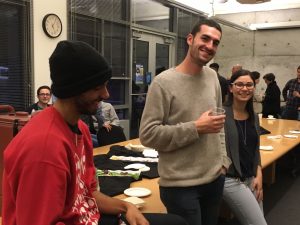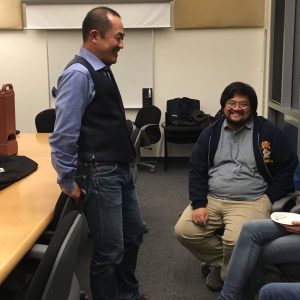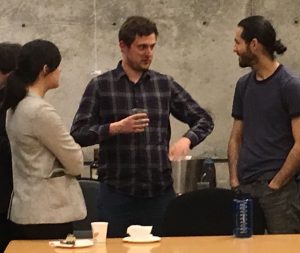WILTSCHKO COLLOQUIUM
This Friday, January 19th, at 1:20 pm in Humanities 1, Room 210, there will be a colloquium by Martina Wiltschko (University of British Columbia). Her talk is entitled “Nominal speech act structure. A personal view.” The abstract is given below:
The concept of person is in many ways tied to speech acts. This is obvious just by exploring the interpretation of pronouns: 1st person pronouns are used to refer to the speaker, 2nd person pronouns are used to refer to the addressee, and 3rd person is used for individuals other than the speech act participants. Another way in which person plays a role for speech acts has to with the fact that in much of the current literature that seeks to “syntacticize speech acts” (Ross 1970, Speas and Tenny 2003, Zu 2013, Miyagawa 2017, a.o.) speech act participants are part of the syntactic representation of sentences, as evidenced, for example, by speaker or addressee-agreement. However, 1st and 2nd person pronouns can receive an impersonal interpretation (Gruber 2013, Zobel 2014) while still triggering grammatical agreement for 1st and 2nd person. This suggests that there are at least two notions of person: one purely grammatical and the other pragmatic in nature.
In this talk I examine yet another way in which person may be tied to speech acts. In particular, assuming the well- established parallel between the functional architecture of clauses and nominal projections (Chomsky 1970, Abney 1987, Grimshaw 2005, Rijkhoff 2008), we might expect that – just as clauses – nominal projections too are dominated by a dedicated speech act structure. Specifically, I will argue that the arguments of (clausal and nominal) speech act structure do not correspond to speech act participants directly, but instead they correspond to each speech act participant’s ‘ground’ – hence I assume a speaker- and addressee-oriented projection. The function of this layer of structure is to encode the mutual process of grounding – the joint activity which allows interlocutors to establish common ground. To support this hypothesis, I review literature from dialogue based frameworks according to which referring to an individual is a collaborative effort between speaker and addressee (Clark and Wilkes-Gibbs 1986, Clark and Bangerter 2004). With this as my background assumption, I discuss the implications of the nominal speech act hypothesis for a number of empirical phenomena including: impersonals, logophors, and social deixis.


